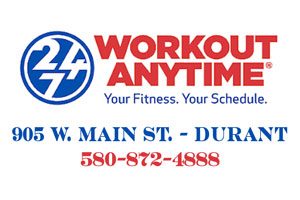Workout Anytime
Greg Maurer
Training on unstable surfaces owes most of its development to rehabilitation, where it originated. There are many unstable training surfaces including physioballs, foam pads, inflated rubber disks, and Bosu’s. These surfaces are used on the training floors of most gyms. 
The idea behind unstable training is that inconsistent motion stimulates sensory apparatus in the muscles and joints leading to increased sensory input and increased muscle activation. In addition, these movements cause muscles on both sides of the joint to co-contract. Co-contraction occurs to some extent during virtually all movement. When we significantly increase co-contraction, the result is increased joint stability.
Increased co-contractions from unstable surface training can be very useful in the treatment of ankle instability and lumbar spine injury. However, when we use a concept originally developed for rehabilitation, we need to carefully evaluate how and when to use this approach in healthy or athletic populations.
For example, many trainers have clients perform shoulder presses while sitting on a physioball or standing on Bosu to increase core muscle activation. However, this does not produce the desired result. Studies show that doing shoulder presses on an unstable surface do NOT increase core muscle activation versus the same exercise done on a stable bench.
The reason for this result is that balanced vertical forces in alignment with the spine do not increase core muscle activity – regardless of instability of the surface the exercise is performed on! The use of asymmetrical loading, such as doing a one-sided shoulder press, does increase core activation. However, this is not increased further by being on an unstable surface.
Horizontal limb movements also increase core activation, but there is not a lot of evidence that adding an unstable surface increases this benefit.
When it comes to low back stabilization, research shows that exercises done on balls in a horizontal position (face up or face down) does increase core muscle activity. Exercises like crunches, bridges, and push-ups on an unstable surface will result in increased core activation.
Unstable Surface Training does NOT work well for absolute strength and power!
When it comes to absolute force production performing exercises such as bench press or squats on an unstable surface is counterproductive as force production significantly decreases when training on unstable surfaces. When training for increased strength and power, performing exercises on stable surfaces is a much better choice.
This is also true for sprint training because training on an unstable surface increases ground contact time and decreases force production, inhibiting acceleration.
The other consideration when using unstable surfaces like a Bosu Ball is that lifting mechanics are significantly altered. Researchers have suggested that training on highly unstable surfaces can actually increase the risk of knee injuries in certain populations! Not to mention the risk of injuries also increases from hopping, jumping, and leaping on and off of unstable surfaces!
Training with Unstable Devices vs Training on Unstable Surfaces
Training using unstable loads like a sandbag has very different effects from training on an unstable surface. In fact, unstable load training has direct positive transfer to many activities of daily living and sports because we are frequently called upon to move unstable loads including:
Carrying shopping bags
Carrying children
Contact sports where you are pushing, pulling and twisting against other people.
Unstable load training with sandbags also results in increased stabilizer firing and muscle activation that directly positively transfers to functional movement.
What role should unstable training play in developing programming for apparently healthy and athletic populations who are not injured?
Research suggests that a combination of unstable and stable training will provide the best results. This brings up two more questions:
Which should come first: stable or unstable?
What level of instability should be used with each particular person?
The answer to the first question is dictated by the rules of proper progression. The three primary phases of stabilization training include:
- “Static” Stabilization (foundational) – meaning ability to stabilize in static postures such as the plank.
- “Dynamic” Stabilization (strength/endurance) – ability to stabilize during dynamic exercises
- “Ultra-Dynamic” Stabilization (power) – ability to stabilize during explosive movements
Within each phase:
- Start with bilateral (both arms or legs) strength development in stable environments because it is safer and will increase strength more.
- Next progress to stable single limb challenges
- Then progress towards hopping and jumping skills in a stable environment
- Then apply that new strength and power to tasks involving postural control on unstable surfaces such as push-ups, planks, and other stability ball exercises done with the body parallelto the floor.
When it comes to how much instability to use with each person, the answer will depend on the goal of the exercise and the ability of the individual. Ideally you will use different levels of instability according to the goal of the exercise and your ability level. Working with a qualified trainer is highly recommended to get the benefits of unstable training!
To learn a systematic approach to incorporating unstable load training check out DVRT – Dynamic Variable Resistance Training here: dvrtfitness.com


